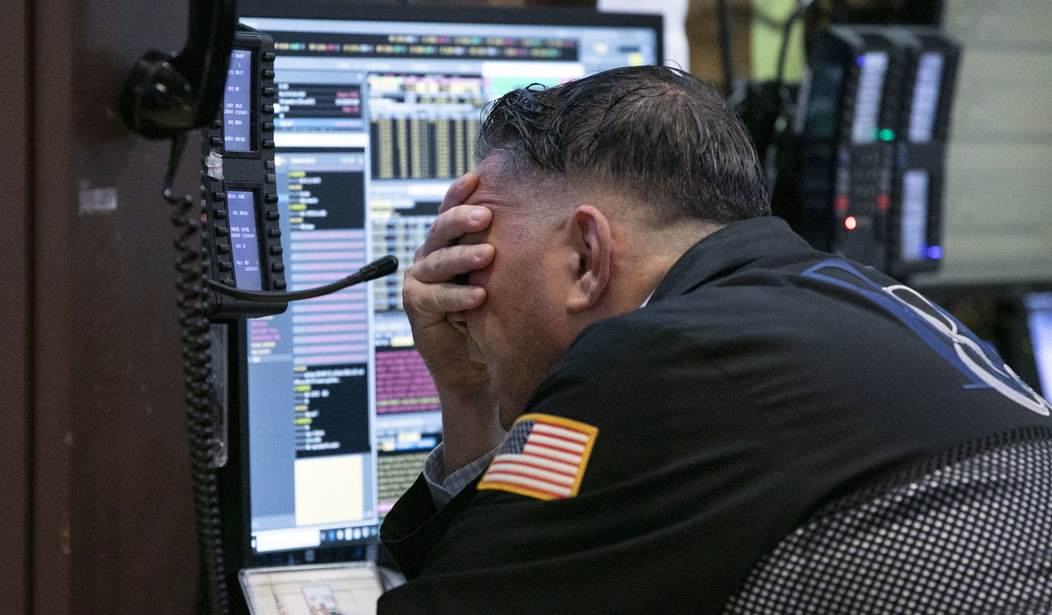Even as millions of Americans are vaccinated, the COVID-19 pandemic has left the U.S. economy in shambles.
Mortgage rates are climbing above 3 percent, while gas prices are skyrocketing—increasing more than 50 cents per gallon, with no end in sight. There is a global shortage of computer chips, generators, and houses. America’s housing market is nearly 4 million homes short of buyer demand, undermining the career prospects of Millennials and other generations.
At the same time, businesses of all sizes continue to be crushed by COVID-related restrictions, especially in blue states. In February, nearly one-quarter of U.S. small and medium-sized businesses were closed—up from 14 percent in October. The worst may be yet to come: 13 percent of small business owners—millions of employers—are prepared to close their doors if economic conditions do not improve later this year.
Then there’s unemployment. Based on the U6 unemployment rate, which accounts for workers who have quit looking for a job and part-time employees looking for full-time work, joblessness is well above 10 percent of the labor market. Last year, over 8 million American families experienced job loss, and millions more remain impacted.
There’s a reason why economic optimism is still low. Even with COVID-19 vaccines widely available, two-thirds of Americans remain hesitant to regularly venture out of home. We are months and months—if not years—away from economic recovery.
In fact, America is closer to a Great Depression 2.0 than a full-scale recovery. Current economic conditions do not even take into account public policy, such as President Biden’s eagerness to raise taxes or impose regulations on employers and their employees. The Biden administration’s plan to increase the corporate tax rate to 28 percent (from 21 percent) would reduce wages by more than 1 percent and kill nearly 160,000 jobs. At the same time, long-run gross domestic product (GDP) would drop by 0.96 percent—about $1,650 per U.S. household.
Recommended
Meanwhile, President Biden’s $15 federal minimum wage proposal—which is backed by congressional Democrats—would reduce employment by another 1.4 million jobs. All in all, the Biden administration’s economic agenda would threaten nearly 5 million career opportunities. Can working Americans afford it, in the middle of a pandemic?
At the height of COVID-19, unemployment levels were already comparable to Great Depression-era struggle, before recognizing the long-term consequences of government-mandated business closure. And that was under a Republican president, who opposed sweeping lockdowns and believed in pro-business policies. Under a Democratic president whose proposals cost trillions of dollars, Americans should brace themselves for more sustained suffering—and taxes to boot.
I am not trying to be a doomsayer. It is simply the reality. Americans cannot expect a return to economic normalcy in 2021—not under this president, not given these conditions. In 2006, I predicted a housing crisis in the coming years. In 2019, I shorted the stock market because I expected a downturn by early 2020. Now, I am moving into long-term equity anticipation securities (LEAPS), with my research showing a potential recession or depression within the next 18 to 24 months. Americans need to hope for the best, but prepare for the worst.
Of course, mass vaccination is one reason to be optimistic, but those in power are not necessarily ready for a return to normality. Dr. Rochelle Walensky, the director of the Centers for Disease Control and Prevention, recently instructed Michigan Governor Gretchen Whitmer—all too eager to abuse her executive authority—to “close things down” again, no matter the economic consequences. Governor Whitmer has already urged people to voluntarily restrict certain activities, despite millions of vaccines being distributed in the state. Then you have Dr. Anthony Fauci, who supports mask-wearing and social distancing even after vaccination.
The logical endpoint of the COVID-19 pandemic is not clear. Because of big-government types like Fauci, we have a long, long way to go. The situation may get worse before it gets better.
Owner and manager of Joseph’s Premier Real Estate, Joseph Semprevivo serves as an adjunct professor of finance, business, real estate and insurance at Indian River State College. He is also the author of the best-selling book “Madness, Miracles, Millions” and the former state economic development commissioner of New Mexico.























Join the conversation as a VIP Member